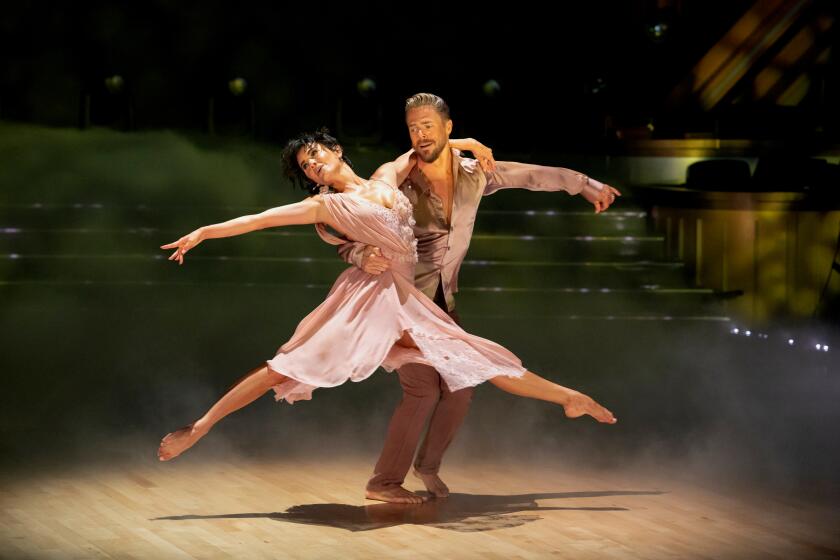DANCE REVIEW : Kanya Sanjo V Program at Japan America Theatre
Among her achievements in nearly a half century of service to the local Japanese-American community, the late dancer/choreographer Kanya Sanjo V created a dance form called kayo-buyo .
Based on Japanese classical dance (her specialty), it relaxed some of the rules to accommodate highly un -classical accompaniments: Japanese pop ballads sung to a mixture of Western and Asian instruments.
Watching the faculty and students of Kanya Sanjo Vâs school dance 15 of her kayo-buyo solos, Sunday at the Japan America Theatre, you saw a fusion of past and present. Steering a course between vulgarity and affectation, the best kayo-buyo re-created archetypal Japanese dance images for a new generation, finding a contemporary pulse and flow for fan- and sleeve- and pole-dances of great vivacity.
Wearing a magnificent white-on-white kimono with a silver obi, Kan-oh Sanjo brought to the parasol dance, âSasame Yuki,â a subtle play of facial expressions, delicate gestures of weeping and the ability to skim the floor with silken gliding steps.
Shimmering manipulations of a fan and her elegant floral kimono in muted tones of plum and peach made Kangiku Sanjoâs âSetsu Gekkaâ equally memorable.
This all-woman company also proved adept at male-impersonation, with Kanfugi Sanjo looking like a living woodblock print in the forceful âJinsei Sugoroku Otoko No Tabiji,â a solo full of dynamic stamping and martial poses with a sword.
The antique black-and-white striped cape and robe, mushroom-shaped hat and powder-blue pants also generated its own drama, bold as the contemporary, up-tempo music.
Some of the students danced kayo-buyo doggedly, as if taking a compulsory test. Some of the costumes recycled nightclub kitsch--especially the silver lame kimonos with hot-pink obis in the group finale. There were even moments when the emphasis on gesture in Japanese dance and the soft-rock rhythms of the songs combined to suggest that Kanya Sanjo V had invented the Vogue.
However, kayo-buyo seemed most often a context for accessibility and this company a devoted instrument of a woman with a very astute sense of her mission and her time.
More to Read
The biggest entertainment stories
Get our big stories about Hollywood, film, television, music, arts, culture and more right in your inbox as soon as they publish.
You may occasionally receive promotional content from the Los Angeles Times.










